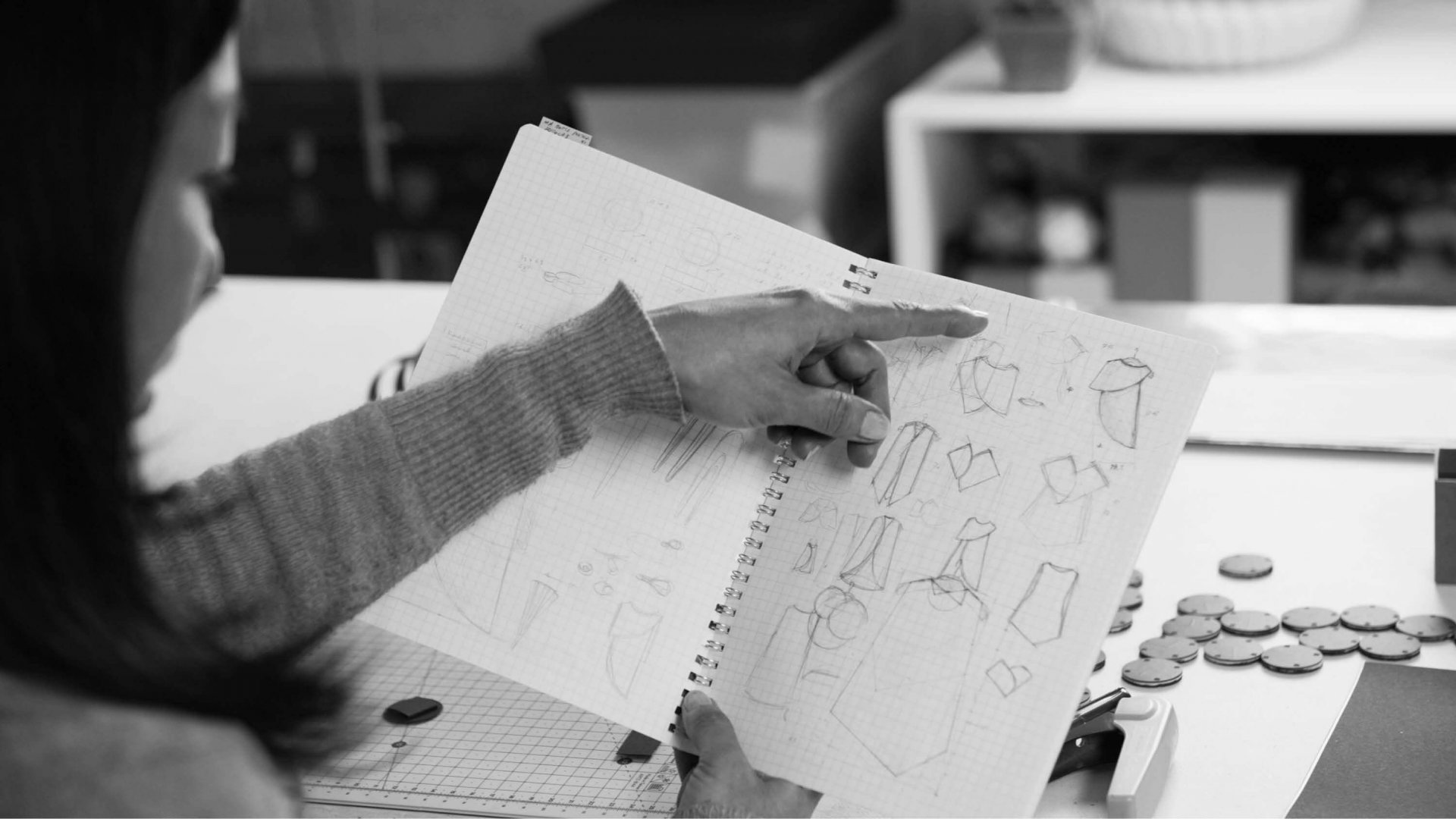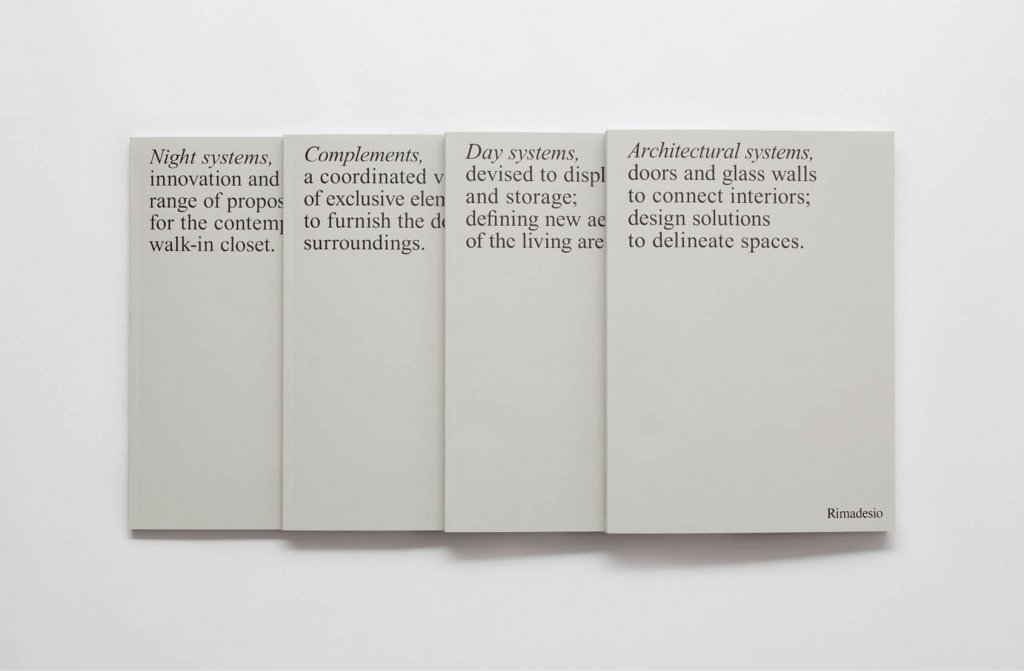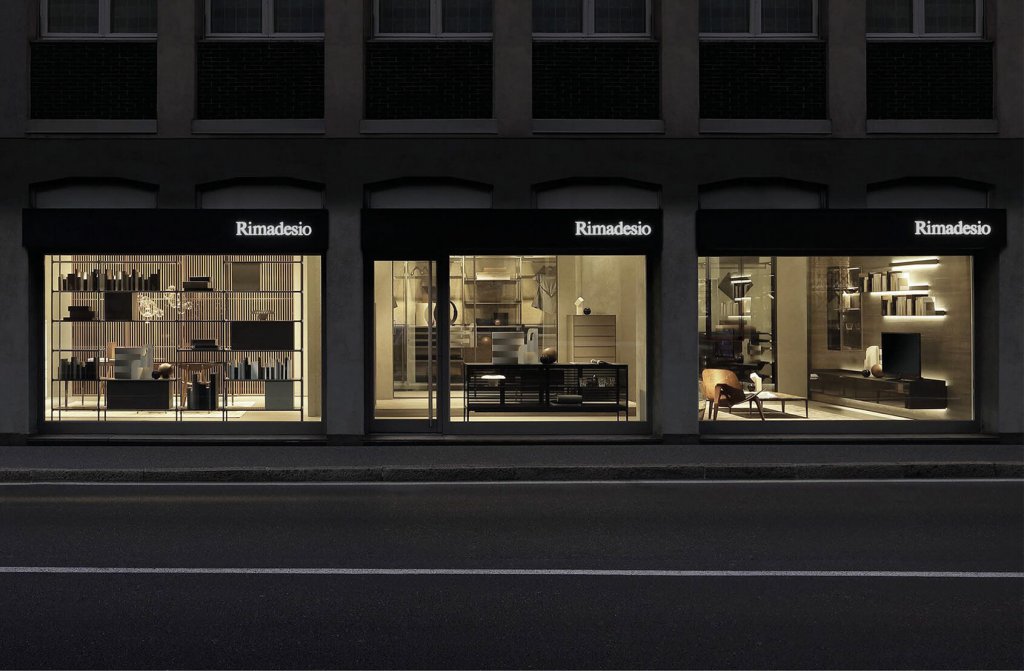Conversation with Yoko Miura
You studied painting at the School of Fine Arts, how did you become interested in paper and in the world of design, and in particular Rimadesio?
Painting was my first approach to art.I have always been particulary interested in large paintings and paintings on architectural features. Along my professional path I dedicated a number of years to art installations, an expresssion of art that requires the presence of visitors to complete and activate it. Then, in the workshop of my friend, who is a ceramic artist, I met a stylist who introduced me to the world of furniture producers. I understood how my work could co-exist harmoniously with other works, even if they had different functions, and were created by professionals from other sectors. I find it immensely stimulating to think about objects as a correlation of creative collaboration, in order to create a unique space.
I started using paper around that time with my work in the design and installation field. Paper allows me to work form in a light, fast and effective way. My childhood experience with origami, with paper dolls and their clothes and activities of paper conversion have come in handy. It is a real joy to play around again with paper, being able to bring my experience and maturity to the table. I have been working with Rimadesio for some years now. I am extremely satisfied with the balanced relationship we have and the positive exchange of meaning and value that has gradually been enhanced between Rimadesio’s pieces and my works.
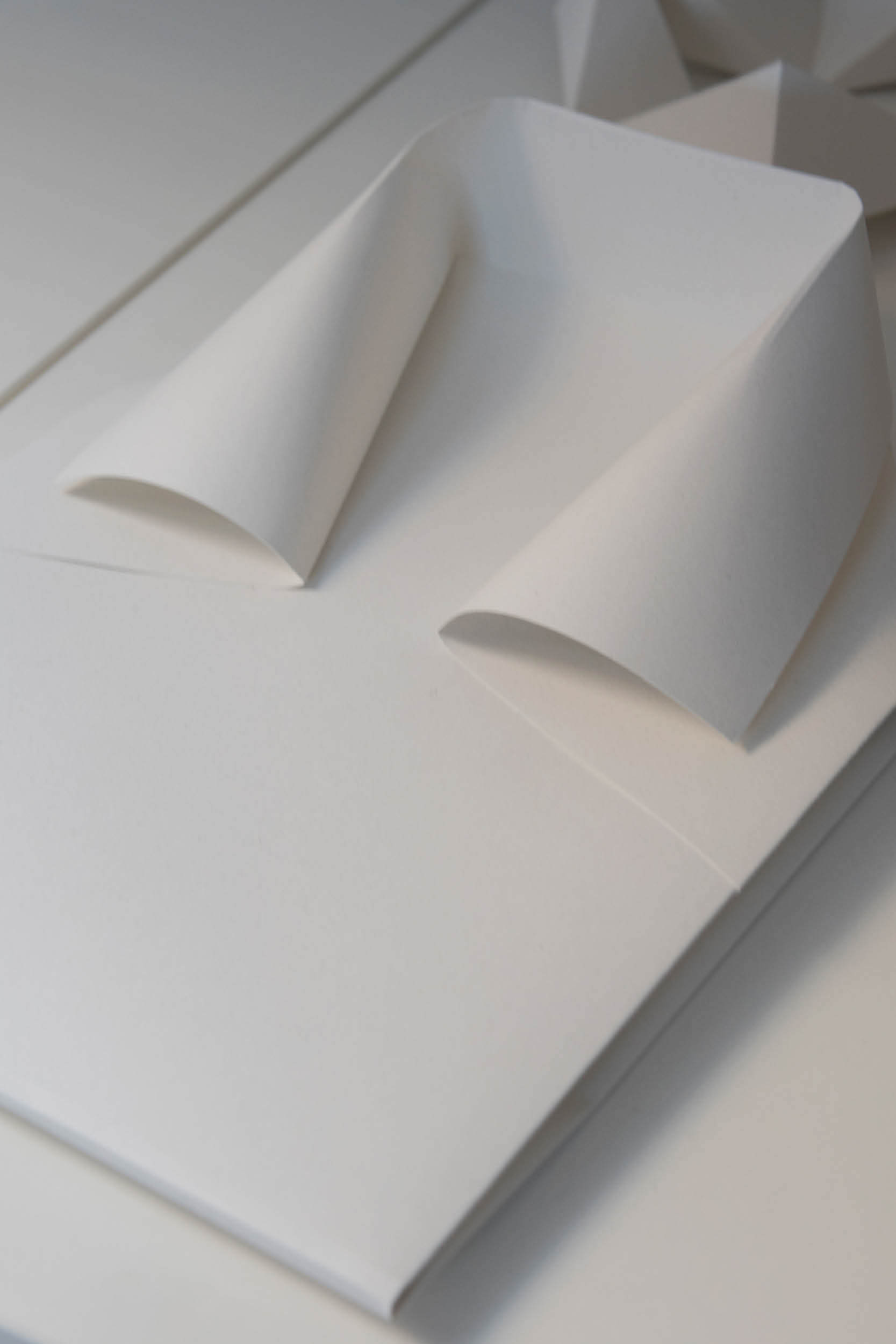
Paper shirt
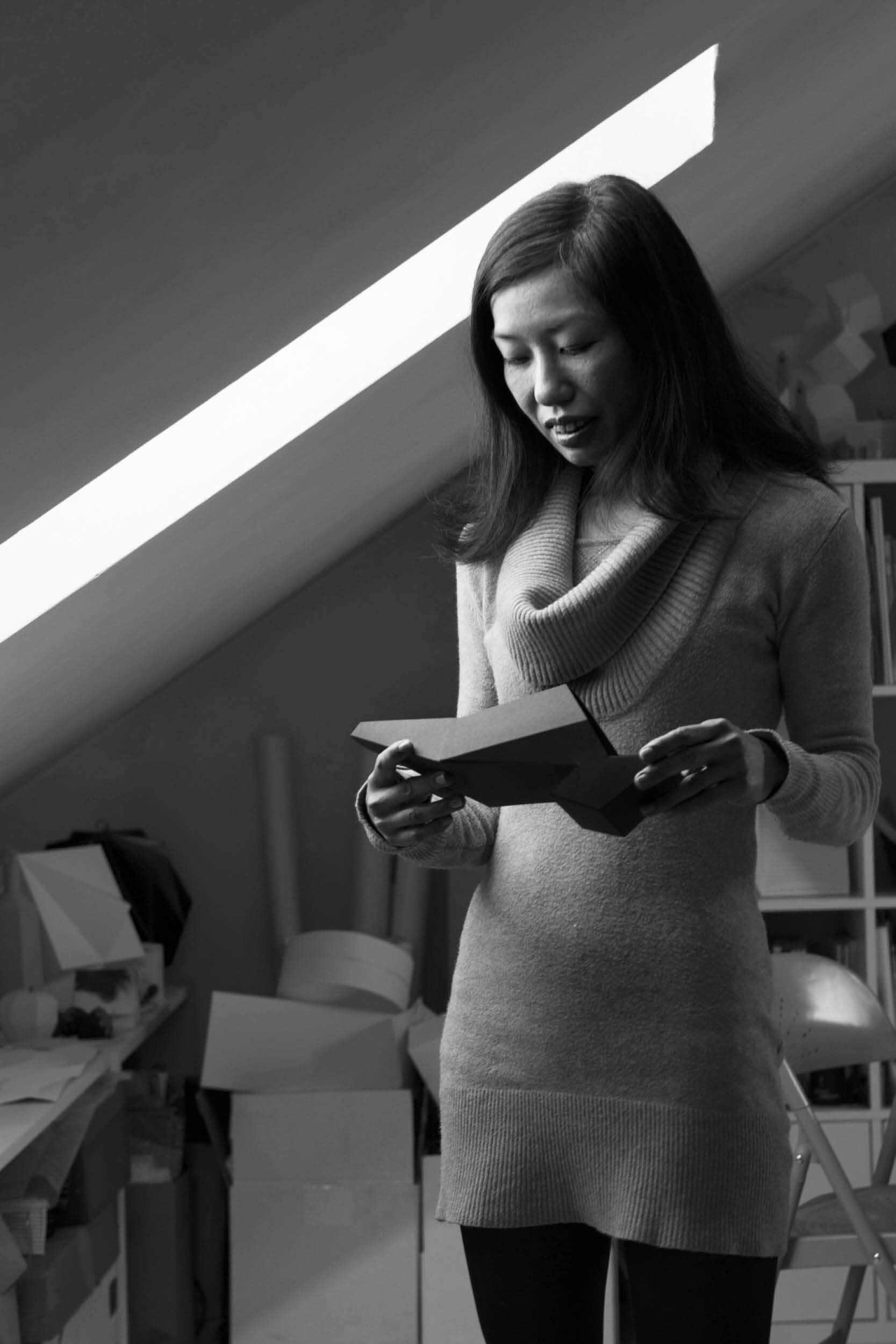
In the Western world paper has always been associated to an idea of fragility and lightness and its use is somewhat limited to writing, bookbinding, printing… while in Japanese culture paper has, historically, always been considered a resistant material, adaptable to a number of uses, take for example the traditional Japanese paper “washi” How do you create to a sculpted, resistant object in paper?
Paper is a highly versatile material and it has numerous characteristics. It can be lightweight or heavy, it can be soft or stiff, thin or thick. According to the direction of the fiber it can resist or it can delicately wrinkle. It’s life cycle is rather limited if compared to other materials, but this is what makes it valuable. There is a value in Japanese culture that is based on loving something simply because you know it is not eternal.
The paper on the sliding door is replaced when its time has come. Every time the paper is replaced the door is regenerated, therefore it never shows any signs of ageing. Love and being sensitive to the passing to time in order to understand the role you have in life helps to keep you active and spirited. The time will come also for my sculptures, they will have to be removed and replaced, to change just as the times change. It is a rule of life.
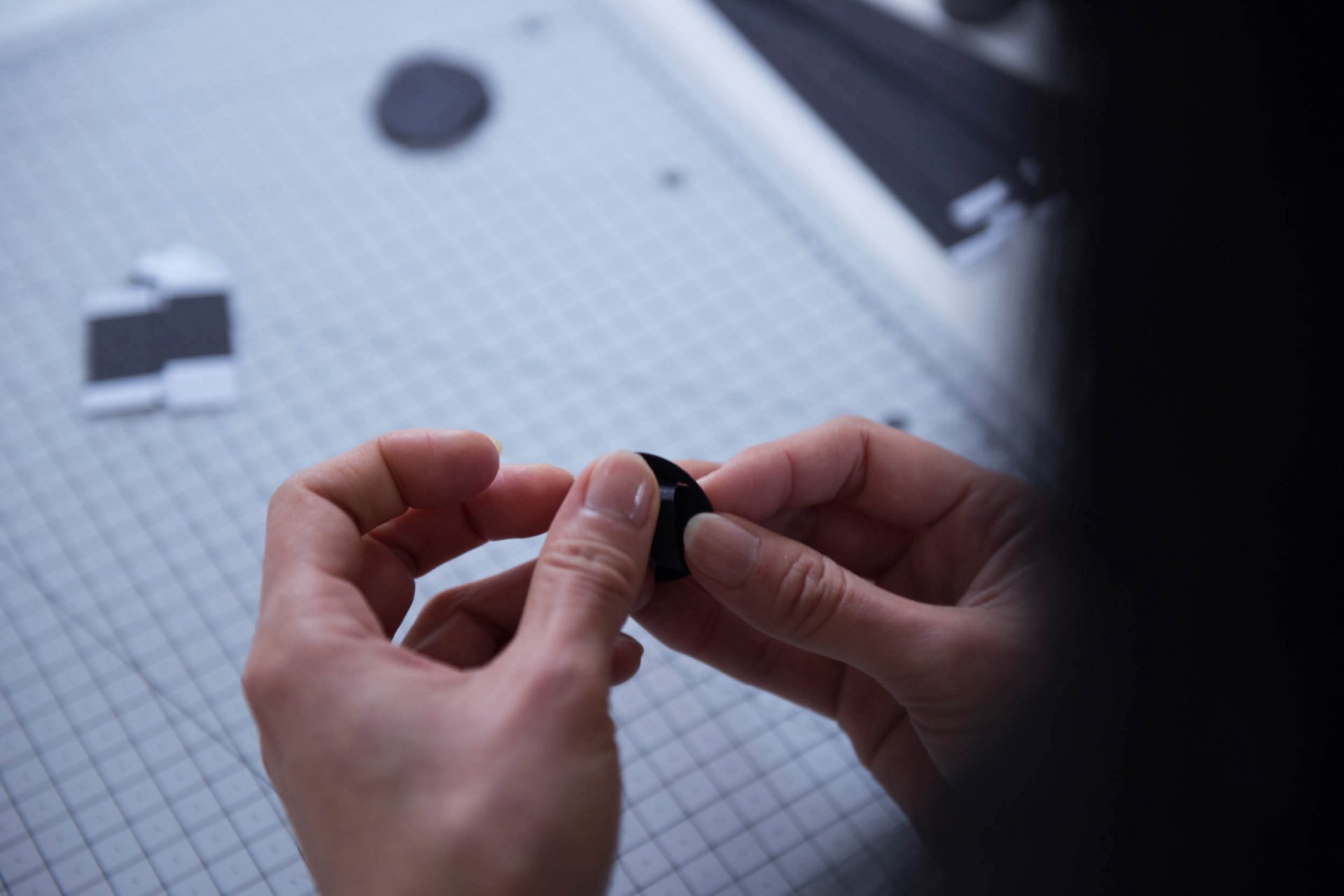
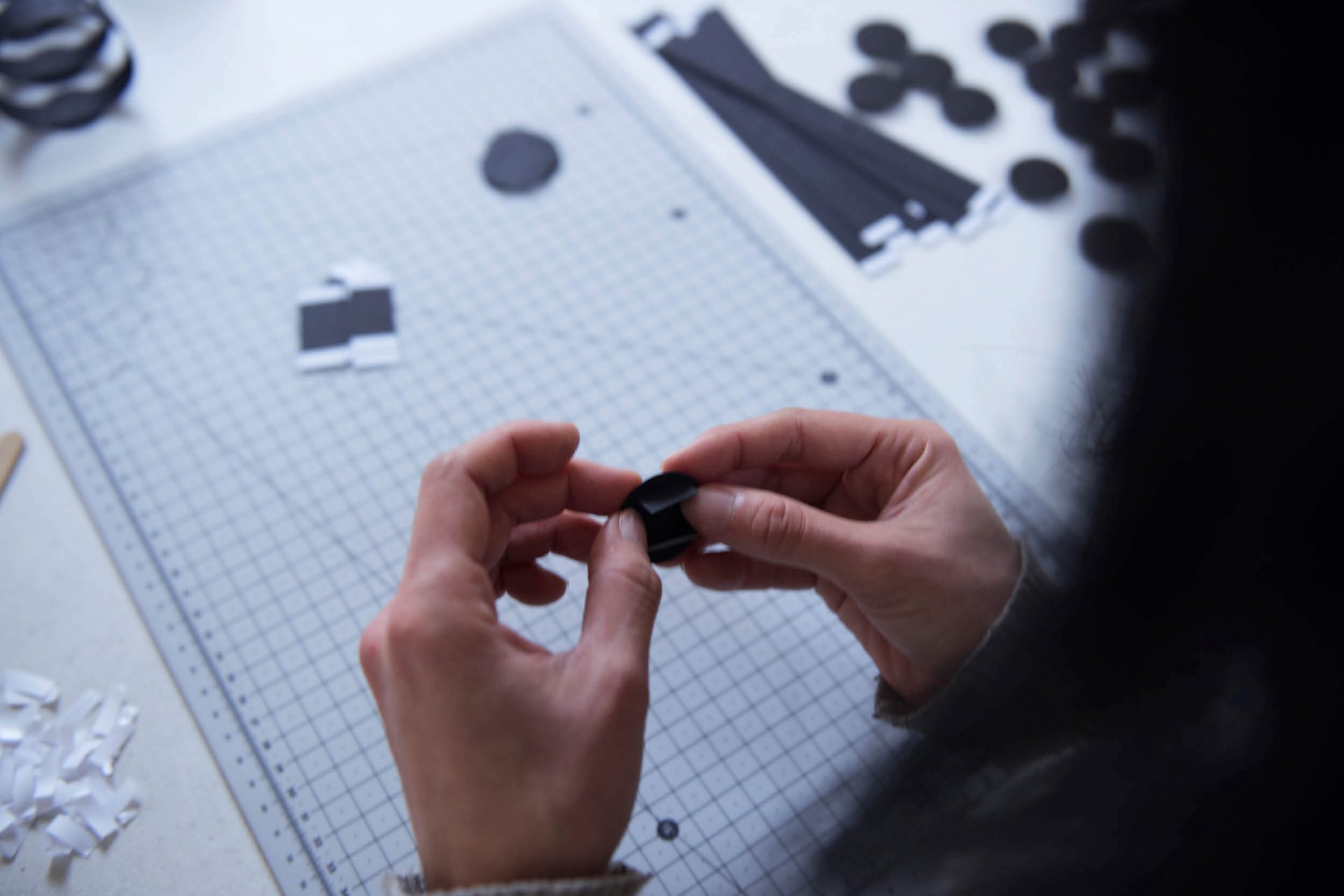
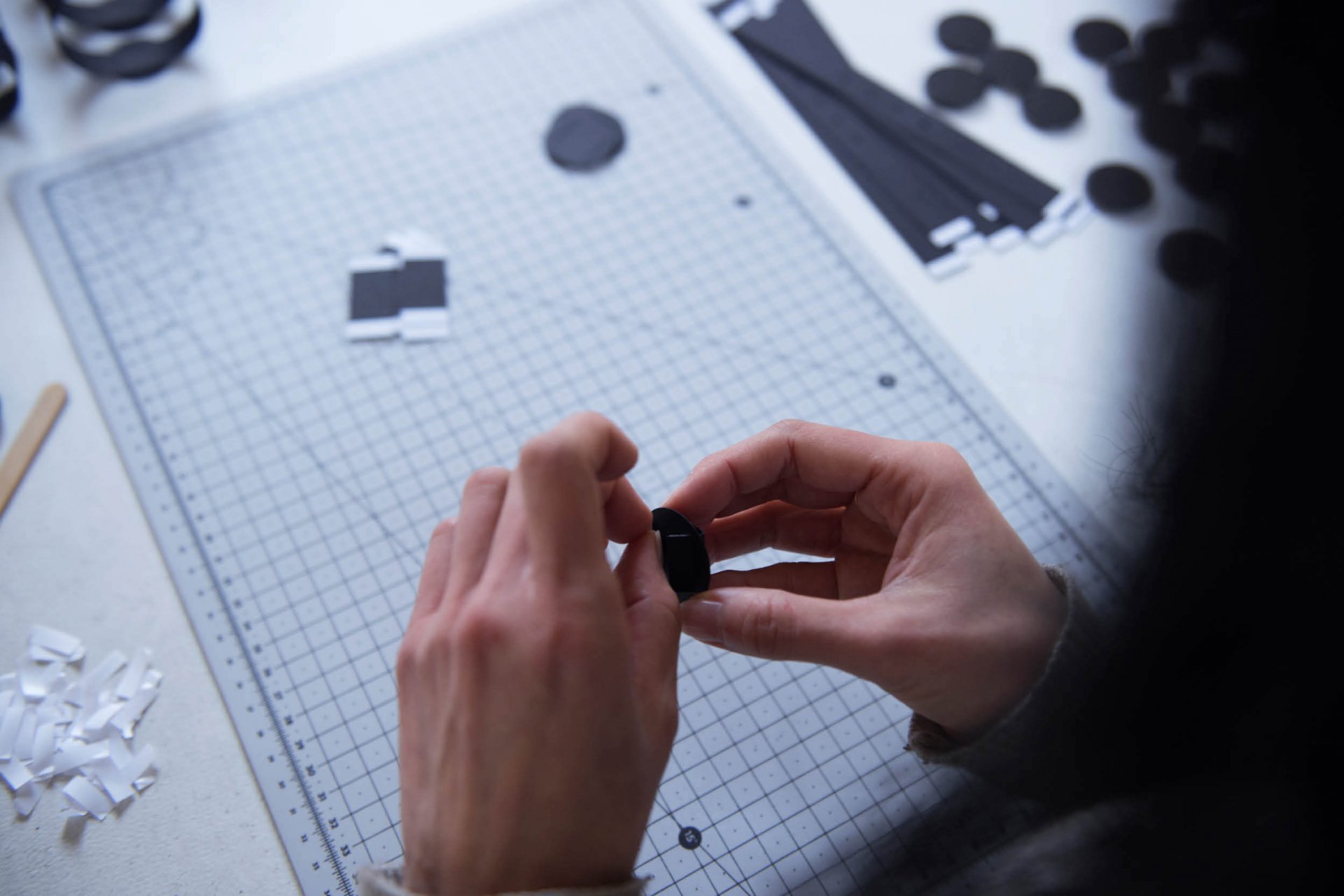
Looking at your works on display, it seems as if they are the ones who give life to locations, spaces and installations, almost allowing us to imagine our life inside them. Tell us about their concept, their origin. How is that expressed in your work and your criteria to make them co-exist in space?
I am pleased that they give you that feeling. I try to create objects that trigger an exchange between the environment or space and those who live in it. They are never illustrative, indicative or unambiguous forms: however rich in detail, they are always extremely concise geometric creations of well-known objects. Abstract forms that every visitor separates out and then interprets through their own liife and experience.
Many aspects of daily life are connected to routines or habits. Imagination and memory complete the experience we live in certain environments, in contact with materials and their interaction with the light. Do you think that everyday consumer objects such as clothes and accessories play a fundamental role in the interpretation of a place? What impact would you like to give to the visitor?
In the furniture of Rimadesio I feel the desire of those who live the home on a daily basis, to integrate it with pleasures and routines. Everyday objects go hand in hand with an inhabited, living space and help characterize it as such, but a showroom is not a home. This is another aspect about working in Rimadesio’s showrooms that galvanizes me: we are already in an extremely pleasant and harmonious location that does not require any additional decoration. My work is not there to be looked at; but to be used. It must be silently present to allow the visitor to imagine the functional experience of the piece of furniture. It is the first point of connection between the visitor and Rimadesio and I would like to mark the beginning of their story together.
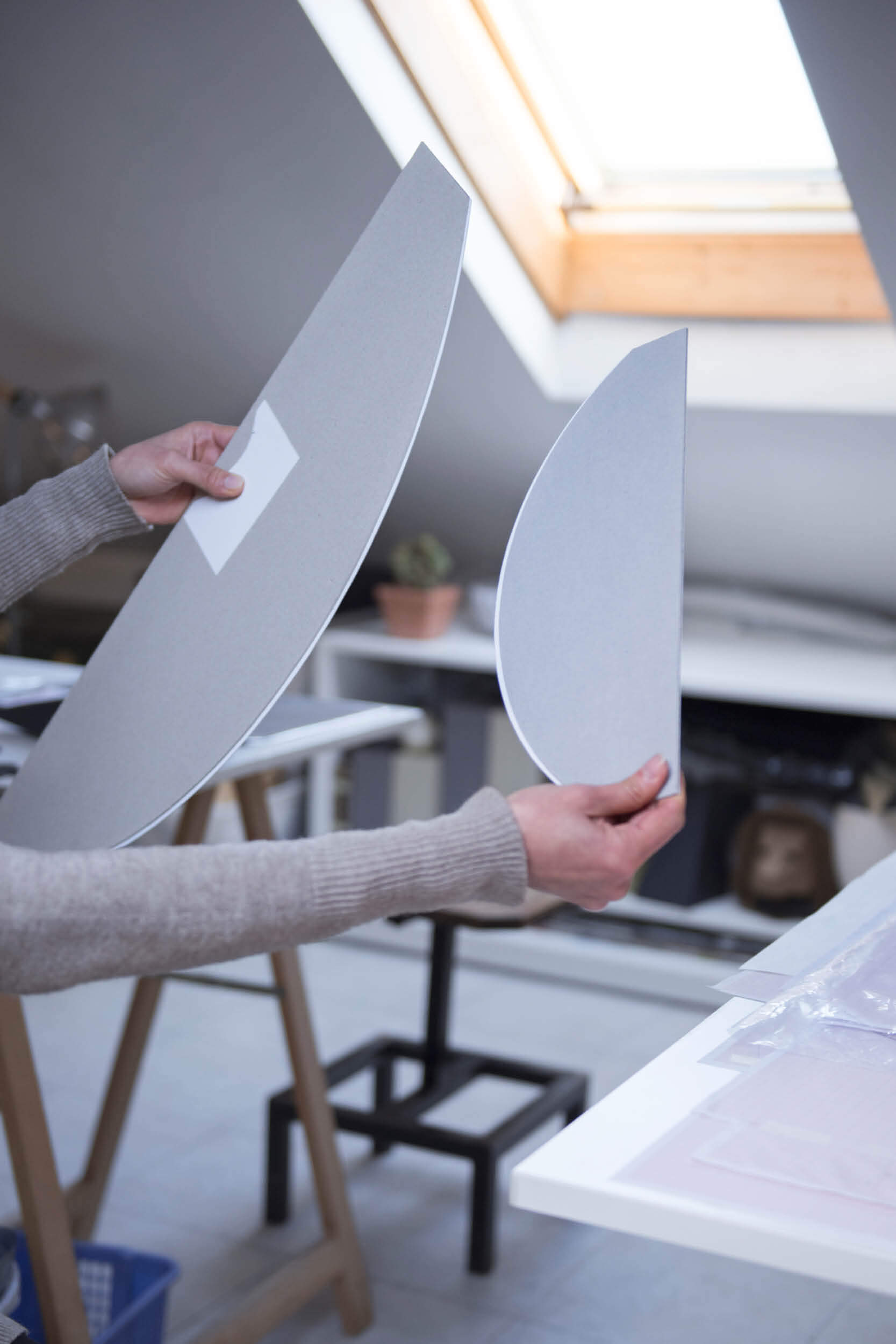
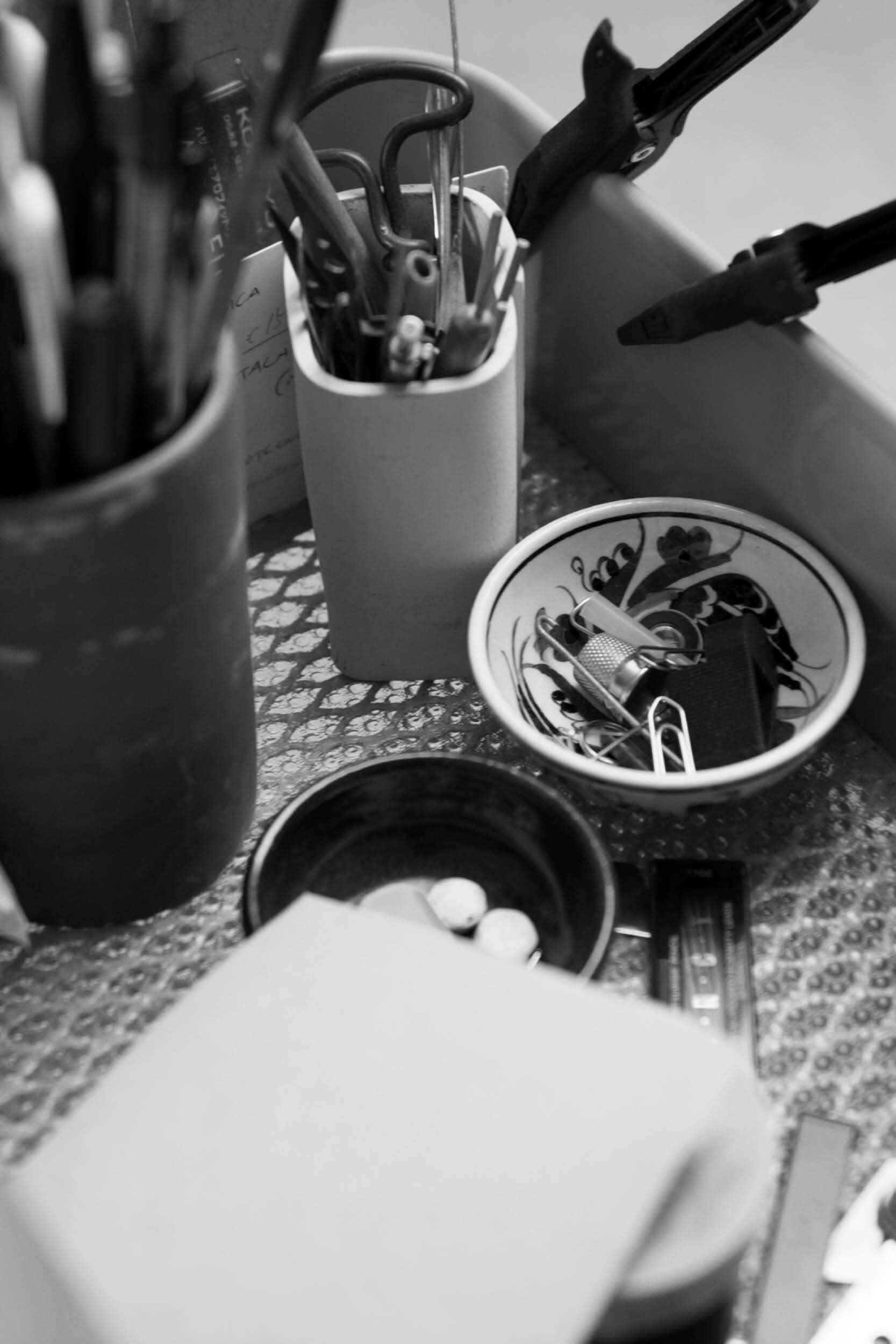
The outer layer is the texture of a material, it is a limit between an object and its surroundings, it represents an exterior or interior space. What importance do you give to the outer layer and what makes to choose paper, ceramics or malleable materials?
I have to create an ideal encapsulation of an object, so I need a surface, an outer layer and not much else. The surface, whether it is bent or curved, creates a volume in which every one of us recognizes our own shoe or shirt. Out of all the materials I use paper is the one which gives me the possibility to create geometrically complex shapes that then appear essential and light thanks to the simplicity of the texture.
My work should not be too complex and invasive, it should help to enhance and appreciate without interfering with the visual harmony of the space.
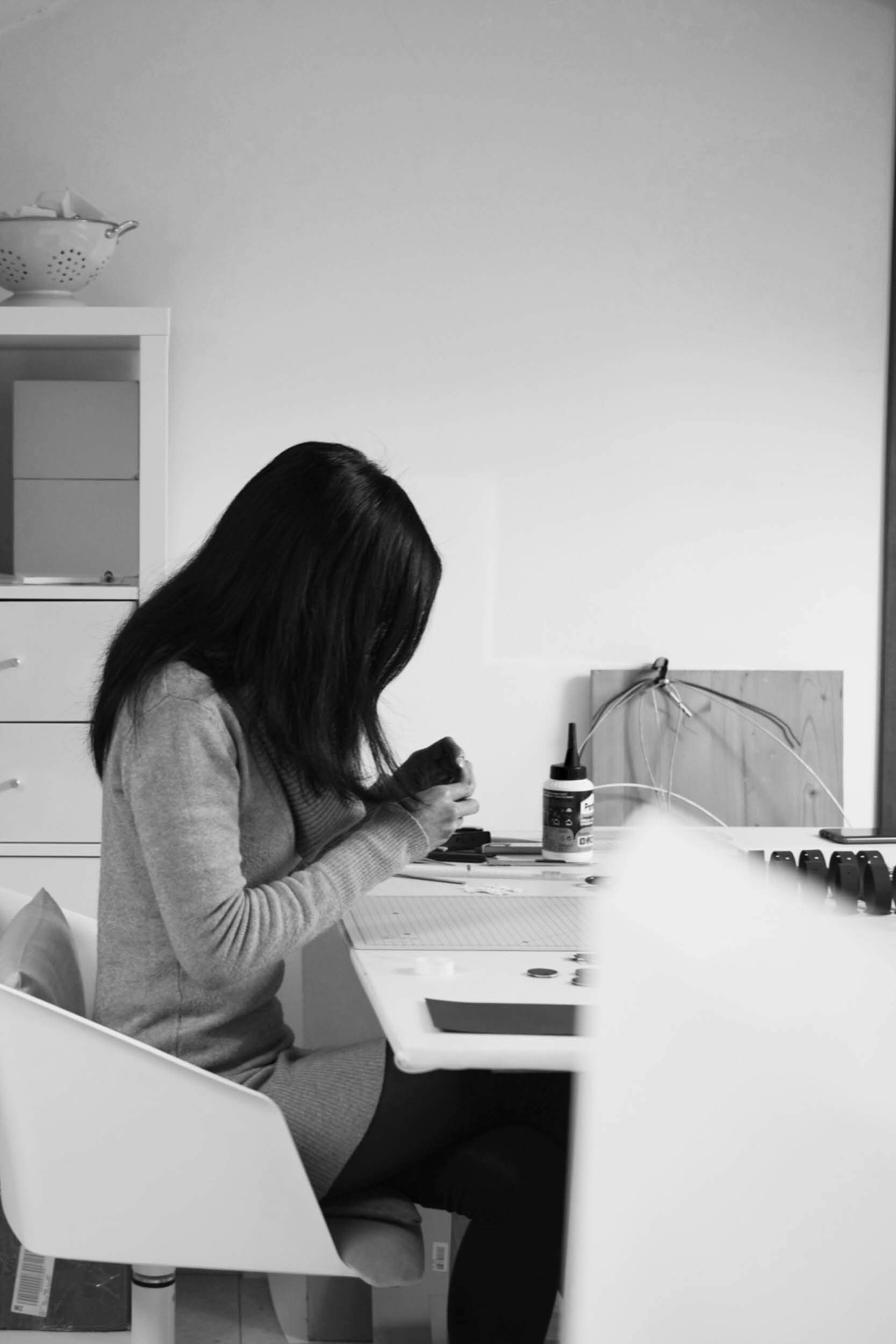
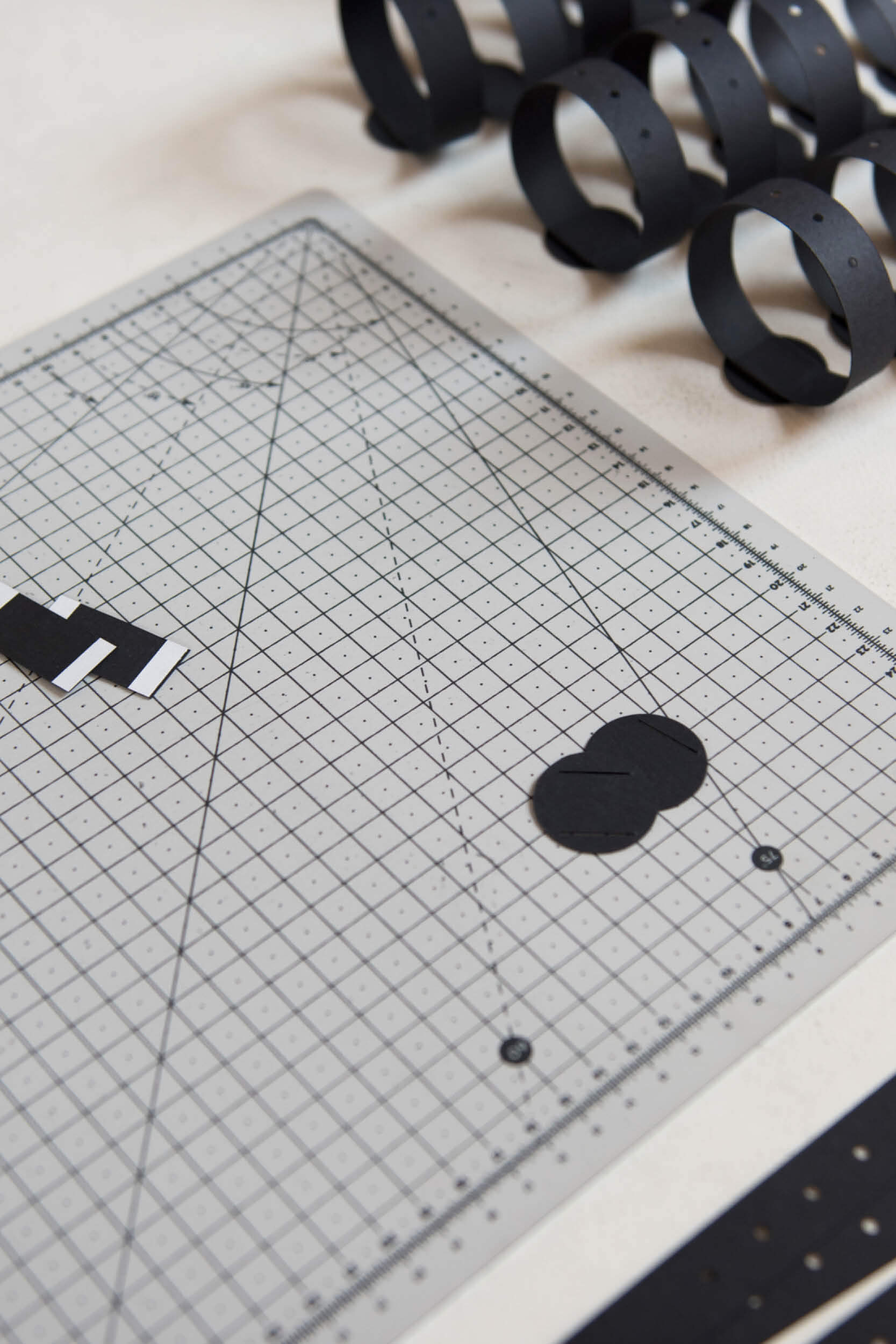
I found the contrast in the showroom to be of great interest –
We share the same extreme simplicity of design and balance as reflected in the attention to the project, down to the slightest detail, even those hidden ones, respect, ethics,. I hope that all the contrasts, on the other hand, enhance and enrich the encountering of form with additional touches.,
what with technological research of the furniture proposed in Rimadesio’s collections and the use of materials more signature to the art world that we find in your sculptures. Two examples of elegance that co-exist harmoniously in the same space. What qualities do they have in common?
We share the same extreme simplicity of design and balance as reflected in the attention to the project, down to the slightest detail, even those hidden ones, respect, ethics,. I hope that all the contrasts, on the other hand, enhance and enrich the encountering of form with additional touches.
